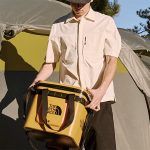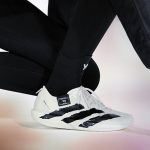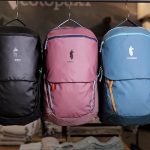Clarus Corporation, parent of the Black Diamond business, reported that sales in its Outdoor segment, which is now comprised primarily of the BDE business, increased 1 percent to $36.7 million, compared to $36.2 million in the year-ago quarter. The gain was reportedly due to a pull forward of Wholesale revenues into the second quarter, partially offset by decreases in the direct-to-consumer (DTC) channels in both North America and Europe.
Black Diamond Q2 revenue came in at $36.5 million, up 2.1 percent from the 2024 second quarter. Excluding the impact of FX contracts, revenue was up 3.9 percent from the prior-year quarter in current dollars and said to be up 2.3 percent in constant currency.
The company completed the sale of the Pieps snow safety brand and intellectual property rights associated with Avalon Safety Equipment in July for $9.1 million, representing a highly successful outcome after a comprehensive strategic review and competitive process. The company said the divestiture is aligned with Clarus’ simplification strategy and further bolsters its balance sheet.
“Overall, we delivered solid results in Q2 that were affected by wavering consumer sentiment in a chaotic macro environment,” offered Neil Fiske, president, Black Diamond Equipment. “I’m pleased with our progress, the strengthening of the Black Diamond brand and the continued transformation of the business.”
Fiske said on the call that revenue, gross margin and adjusted EBITDA were all up as Black Diamond continues to simplify and move toward a more full-price model and improve the quality of revenue along with the quality of brand execution.”
“In addition to the divestment of Pieps, we’re dealing with two unusual and somewhat unpredictable factors impacting our results, tariffs and currency,” Fiske continued.
Currency was first up as a key factor.
“With 33 percent of our revenue coming from Europe, the euro-dollar exchange rate has a significant impact on our financials,” Fiske noted. “We began the year at €1.035 to the dollar and hedged about half of our revenues for the year at €1.08. Few would have predicted the rise to €1.18 following the initial April tariff announcements. That sharp rise in the euro put our hedge position underwater for the quarter and likely for the remainder of the year. For the quarter, the loss on FX contracts was about $447,000 in both reported revenue and EBITDA. For the year, assuming an exchange rate of $1.15, that loss would be $1.4 million. These FX contracts roll off by year-end.”
He noted that on the flip side, the company saw a gain from the FX fluctuation on the translation of European operating results.
“For the quarter, FX lifted EU revenues by $1.4 million and EU EBITDA by $64,000. The net of these two factors, the negative from FX contracts and the positives of earnings translation, is a hit to earnings of $383,000 for the quarter,” he shared.
Tariffs were called out as the second unusual factor for the quarter.
“In early May, we initiated our tariff mitigation plan, which included raising prices, negotiating vendor concessions, airfreighting products were necessary and accelerating our exit out of China,” Fiske explained. “Due to these actions and the lag effects of tariffs running through the supply chain, we did not see a material impact from tariffs in Q2. However, looking ahead for the year, we expect the current tariffs, which include the 10 percent reciprocal tariffs on most countries, 50 percent on steel and aluminum, and 55 percent on China to have a $3.4 million impact on earnings even after our mitigating measures. And of course, we are all waiting to see how the reciprocal tariff situation plays out.”
Fiske said if the tariffs land above the current 10 percent level, they expect to see an additional drag on earnings in 2025.
North America
Excluding the impact of FX contracts, Fiske said North American Wholesale, the brand’s largest market, was up 1.6 percent year-over-year (y/y). North America digital direct-to-consumer, which represents about 17 percent of the region’s revenue, was down 20.1 percent y/y.
“The result reflects our strategy to tighten up discounting in the pro channel, which was down 27.8 percent, and reducing off-price sales in e-commerce,” Fiske noted.
Fiske said the company also saw an immediate pullback by consumers post “Liberation Day” and softness in May and June as the brand rolled out new tariff prices ahead of much of the market. Full-price sales for digital DTC were reported to be “up slightly,” while discounted sales were down substantially, a shift in mix that Fiske said it expects to build upon in the back half.
BDE Europe
Europe wholesale increased 4.8 percent y/y in reported terms and was flat in constant currency. Europe digital DTC was said to be down 10.1 percent y/y and down 14.6 percent in constant currency.
Distributors
International distributor markets, which represent about 8 percent of total revenue, were up 81.3 percent, reflecting a permanent shift in the timing of deliveries as we discussed in our last update.
Profitability and Expenses
Black Diamond operating gross margin for the quarter came in at 34.9 percent, up 80 basis points y/y. Excluding the impact of FX contracts, gross margins would have expanded even more, and Fiske said he expects gross margin to continue to improve relative to last year in the back half even after absorbing the current level of tariffs.
“The progress we’ve made in simplifying the business, improving product margins and cleaning up our inventory gives us some cushion against the tariff impacts versus our position a year ago,” he said.
Black Diamond operating expenses, excluding restructuring charges, were down 0.8 percent and down even more in constant currency.
Inventories reportedly ended the quarter in “good shape” with much less exposure to discounted merchandise and a healthy concentration in A styles. BDE inventory ended Q2 at $64.2 million, up 4.5 percent to the prior-year Q2 period-end due to pull forwards for the fall season as part of the tariff mitigation plan.
“As we look to the back half, we expect that our better inventory composition will position us to grow our full-price business as we continue to shrink discounted sales, both in absolute terms and as a percentage of the mix,” Fiske detailed.
Adjusted EBITDA for the segment was a loss of $213,000. Excluding the adjusted EBITDA loss from PIEPS in the quarter of $516,000, adjusted EBITDA for Black Diamond in Q2 came in at $303,000 versus a small loss in the same period last year.
“In sum, we’ve made good progress this quarter,” Fiske summarized. “Sales margin and adjusted EBITDA were all up in the face of a particularly uncertain consumer and market environment. We simplified the business with the sale of our PIEPS snow safety brand. We continue to improve the quality of our inventory and revenue progressing to a more full-price business. Our apparel initiative accelerated with 11.3 percent growth in the category and a 21 percent reduction in sales from discontinued merchandise. We continue to reduce our SG&A costs. We implemented our tariff mitigation plan to offset nearly half of the projected tariff impact in 2025 at current levels. We launched our new e-comm site on a more cost-effective and scalable Shopify platform and into a more connected digital ecosystem.”
He added that they published their annual impact report outlining 2030 sustainability goals and progress towards them.
“As we look to the second half, the greatest challenge remains uncertainty on tariffs, consumer sentiment and macroeconomic conditions,” Fiske concluded. “That said, I think we’re much better positioned than a year ago to deal with all those factors.”
Image courtesy Black Diamond Equipment
















